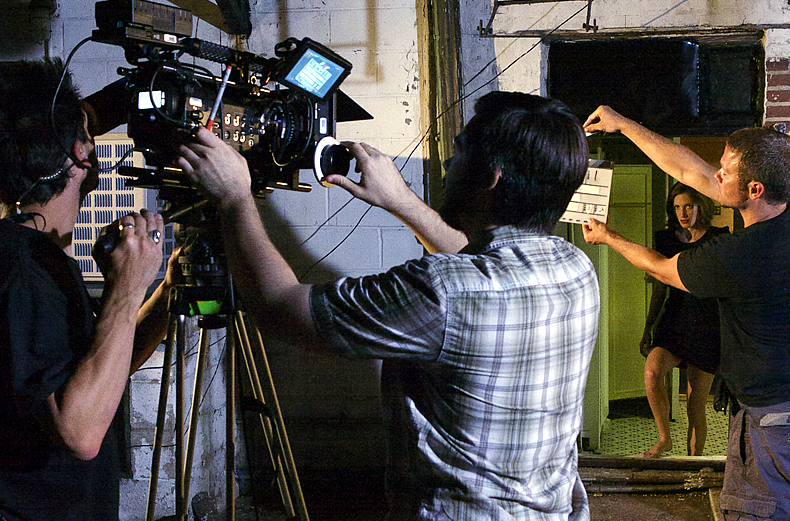12 Super Smart Ways to Save Money on Film and Television
Film and television production can be an expensive endeavor, but with careful planning and smart choices, you can save a significant amount of money without compromising on quality. In this article, we will explore 12 super smart ways to save money on film and television projects. From pre-production to post-production, these tips will help you make the most of your budget and bring your creative vision to life while keeping costs under control.
Budget Planning and Management
Setting a Realistic Budget
One of the first steps in saving money on film and television projects is to establish a realistic budget. Evaluate the requirements of your production and allocate funds accordingly. Be thorough in your budget estimation and consider all aspects, including pre-production, production, and post-production expenses.
Prioritizing Expenses
Identify the essential expenses and prioritize them based on their impact on the final product. Allocate more resources to critical aspects like talent, production design, and post-production. This way, you can ensure that the core elements of your project receive the attention they deserve.
Tracking Expenses and Controlling Costs
Maintain a detailed record of all expenses throughout the production process. Regularly review your budget and identify areas where you can reduce costs without compromising quality. By closely monitoring expenses, you can make informed decisions and stay within your budget.
Location Selection and Negotiation
Utilizing Existing Locations
Consider utilizing existing locations instead of building elaborate sets from scratch. Look for places that naturally fit your script's requirements. This approach can save significant amounts of money on construction, set decoration, and location scouting.
Negotiating Favorable Deals
When selecting locations, negotiate with property owners to secure favorable deals. Explain the benefits of the exposure their property will receive, and propose flexible schedules to minimize disruption. Negotiating effectively can help you secure desirable locations at reduced costs.
Choosing Cost-Effective Alternatives
Explore cost-effective alternatives for expensive shooting locations. For example, shooting in smaller towns or suburbs can often be more affordable than filming in major cities. Additionally, consider public spaces or venues that offer discounted rates for film productions.
Casting and Crewing
Seeking Local Talent
Consider casting local talent to reduce expenses associated with travel and accommodation. Local actors and crew members may offer competitive rates, and their knowledge of the area can be beneficial during production.
Collaborating with Emerging Professionals
Partnering with emerging professionals, such as recent graduates or aspiring filmmakers, can bring fresh perspectives and cost-effective solutions to your project. These individuals are often willing to work for lower rates or even for the experience itself.
Networking and Building Relationships
Build a network of reliable and talented professionals in the film and television industry. By nurturing relationships with crew members, actors, and technicians, you can form a reliable team that understands your vision and is committed to helping you save money without compromising quality.
Equipment and Gear
Renting vs. Buying
Consider renting equipment instead of purchasing it outright. Renting can be more cost-effective, especially for high-end cameras, lighting gear, and other specialized equipment. Evaluate your production's needs and rent the necessary gear from reputable rental houses.
Exploring Affordable Equipment Options
If purchasing equipment is necessary, explore affordable alternatives. Research the market for cost-effective options that meet your production requirements without breaking the bank. Consider used equipment or more budget-friendly models that still deliver satisfactory results.
Borrowing or Sharing Resources
Collaborate with other filmmakers or production companies to share resources and reduce costs. Borrowing equipment or pooling resources can significantly lower expenses, especially for one-time or infrequent use items.
Effective Scriptwriting and Storyboarding
Streamlining Scenes and Locations
During the scriptwriting process, aim to streamline scenes and locations to minimize production expenses. Fewer locations and efficient scene transitions can save time and money. Consider consolidating scenes in the same or similar locations to reduce the number of setups required.
Planning Shots and Camera Movements
Carefully plan shots and camera movements to avoid unnecessary retakes or additional shooting days. Create detailed storyboards or shot lists to ensure a smooth production process, reducing the need for costly reshoots.
Maximizing Efficiency in Production
Efficiency is key to saving money on film and television projects. Optimize production schedules and plan sequences that maximize the use of available resources. By minimizing downtime and optimizing shooting sequences, you can reduce labor costs and save valuable time.
Production Design and Set Dressing
Repurposing Props and Set Pieces
Instead of investing in new props and set pieces, consider repurposing items you already have or renting them from prop houses. Creatively transforming existing items can save money while still achieving the desired production design.
DIY Approach to Set Dressing
Engage in do-it-yourself set dressing to reduce costs. Tap into the skills of your production team to create and decorate sets using cost-effective materials. This approach not only saves money but also adds a personal touch to your production.
Creative Use of Lighting and Décor
Maximize the use of lighting and décor to create visually striking scenes without spending a fortune. Experiment with different lighting techniques and use affordable alternatives for expensive lighting fixtures. Similarly, explore creative ways to achieve the desired atmosphere through inexpensive décor elements.
Costumes and Makeup
Renting or Borrowing Wardrobe
Consider renting or borrowing costumes and wardrobe items instead of purchasing them outright. Costume rental houses, thrift stores, and collaborations with local designers can provide cost-effective options that fit your production's aesthetic requirements.
Utilizing Makeup and Hair Styling Skills
Make use of the talents within your production team for makeup and hair styling. Skilled crew members can create stunning looks without the need for expensive professional services. Invest in quality makeup products that can be used across multiple projects.
Exploring Thrift Stores and Vintage Shops
Thrift stores and vintage shops can be treasure troves for finding unique and affordable clothing items. Explore these options to discover authentic pieces that enhance your characters' costumes while staying within budget.
Post-Production Strategies
Efficient Video Editing Techniques
Optimize your video editing process to save time and resources. Familiarize yourself with efficient editing techniques and utilize shortcuts and automation tools provided by editing software. This will help you streamline your workflow and reduce post-production costs.
Utilizing Free or Affordable Software
Take advantage of free or affordable video editing software and plugins available in the market. Many professional-grade tools offer cost-effective versions or free trials that can meet your post-production needs without the need for expensive licenses.
Sound Design and Music Licensing
Consider collaborating with aspiring sound designers and composers who are looking to build their portfolios. By offering them exposure and credit, you can acquire high-quality sound design and music for your project at reduced costs or even for free.
Marketing and Distribution
Digital Marketing and Social Media Promotion
Harness the power of digital marketing and social media to promote your film or television project effectively. Create engaging content for online platforms and build a following that can help generate buzz and attract a wider audience.
Collaborating with Influencers and Bloggers
Collaborate with influencers and bloggers who align with your project's genre or target audience. Partnering with them can amplify your reach and generate interest in your production without significant financial investment.
Exploring Alternative Distribution Platforms
Consider alternative distribution platforms that cater to niche audiences or offer cost-effective distribution solutions. Digital platforms, streaming services, and video-on-demand options can provide wider access to your project while keeping distribution costs manageable.
Insurance and Legal Considerations
Comprehensive Insurance Coverage
Ensure that your production has comprehensive insurance coverage to protect against unexpected accidents or damages. Though insurance may seem like an additional expense, it can save you from significant financial loss in the long run.
Contracts and Agreements
Utilize contracts and agreements to establish clear expectations and protect your rights as a filmmaker. Working with legal professionals can help you create legally binding documents that outline the terms and conditions of your production, reducing the risk of costly disputes.
Copyright and Licensing Compliance
Avoid copyright infringement issues by ensuring that you obtain proper licenses and permissions for any copyrighted materials used in your project. Unauthorized use of copyrighted content can lead to legal complications and hefty fines, which can be detrimental to your budget.
Craft Services and Catering
DIY Catering Options
Consider do-it-yourself catering options instead of hiring expensive catering services. Designate a team member or collaborate with local food providers to create affordable and delicious meals that cater to the dietary needs of your cast and crew.
Opting for Local Food Suppliers
Support local businesses by sourcing food and beverages from nearby suppliers. Local providers may offer competitive prices and personalized service, helping you save money while contributing to the local economy.
Minimizing Waste and Managing Leftovers
Minimize waste and manage leftovers efficiently to avoid unnecessary expenses. Plan meals carefully to avoid excessive quantities and explore options to donate excess food to charities or shelters.
Transportation and Logistics
Carpooling and Ride-Sharing
Encourage carpooling and ride-sharing among your cast and crew members. This not only reduces transportation costs but also minimizes the environmental impact of your production.
Renting Fuel-Efficient Vehicles
If renting vehicles is necessary, opt for fuel-efficient options. Choosing eco-friendly vehicles can help you save money on fuel expenses and promote sustainable practices within your production.
Planning Efficient Routes
Plan production schedules and routes efficiently to minimize travel time and fuel consumption. Optimize the order of shooting locations to reduce unnecessary travel between different sites.








 English (US) ·
English (US) ·